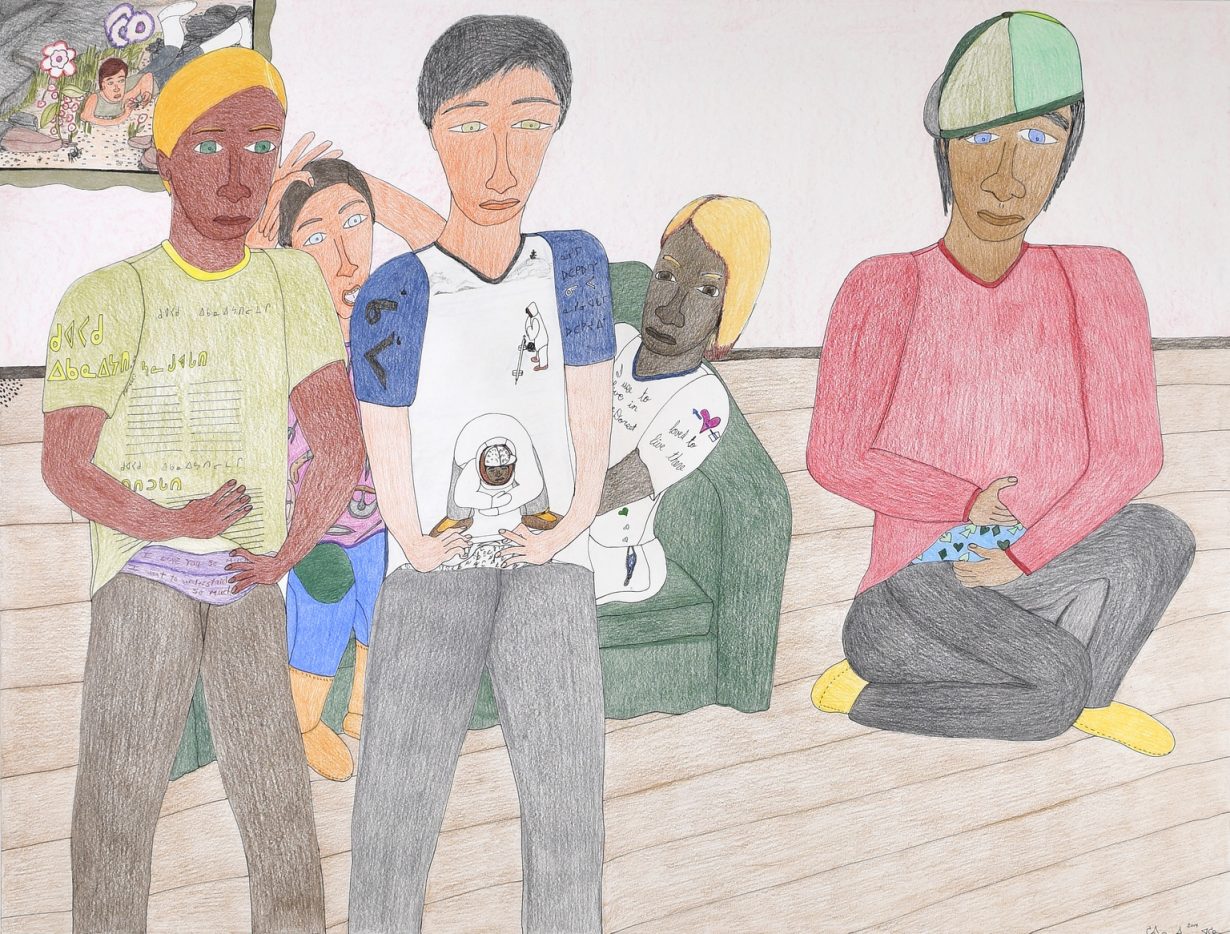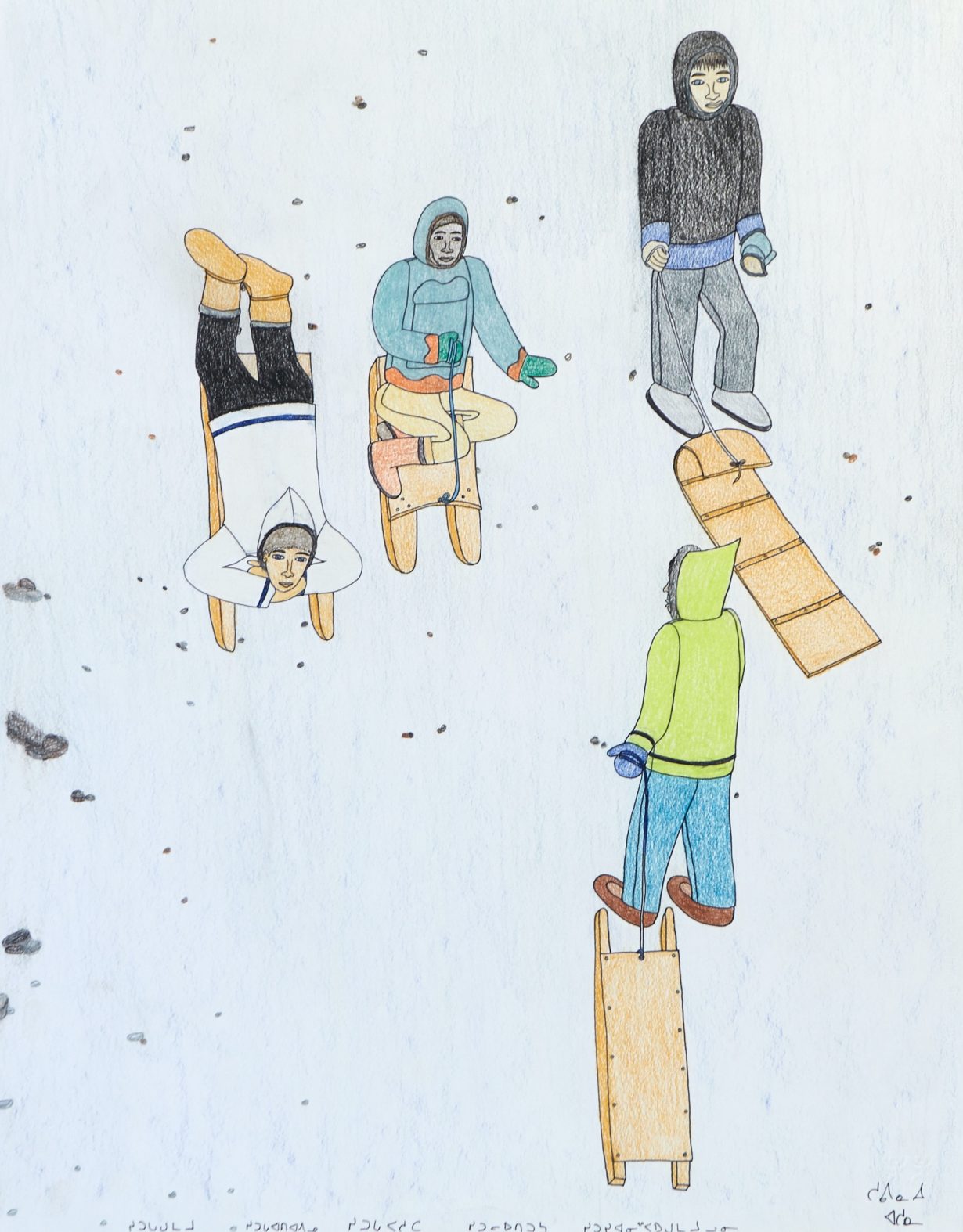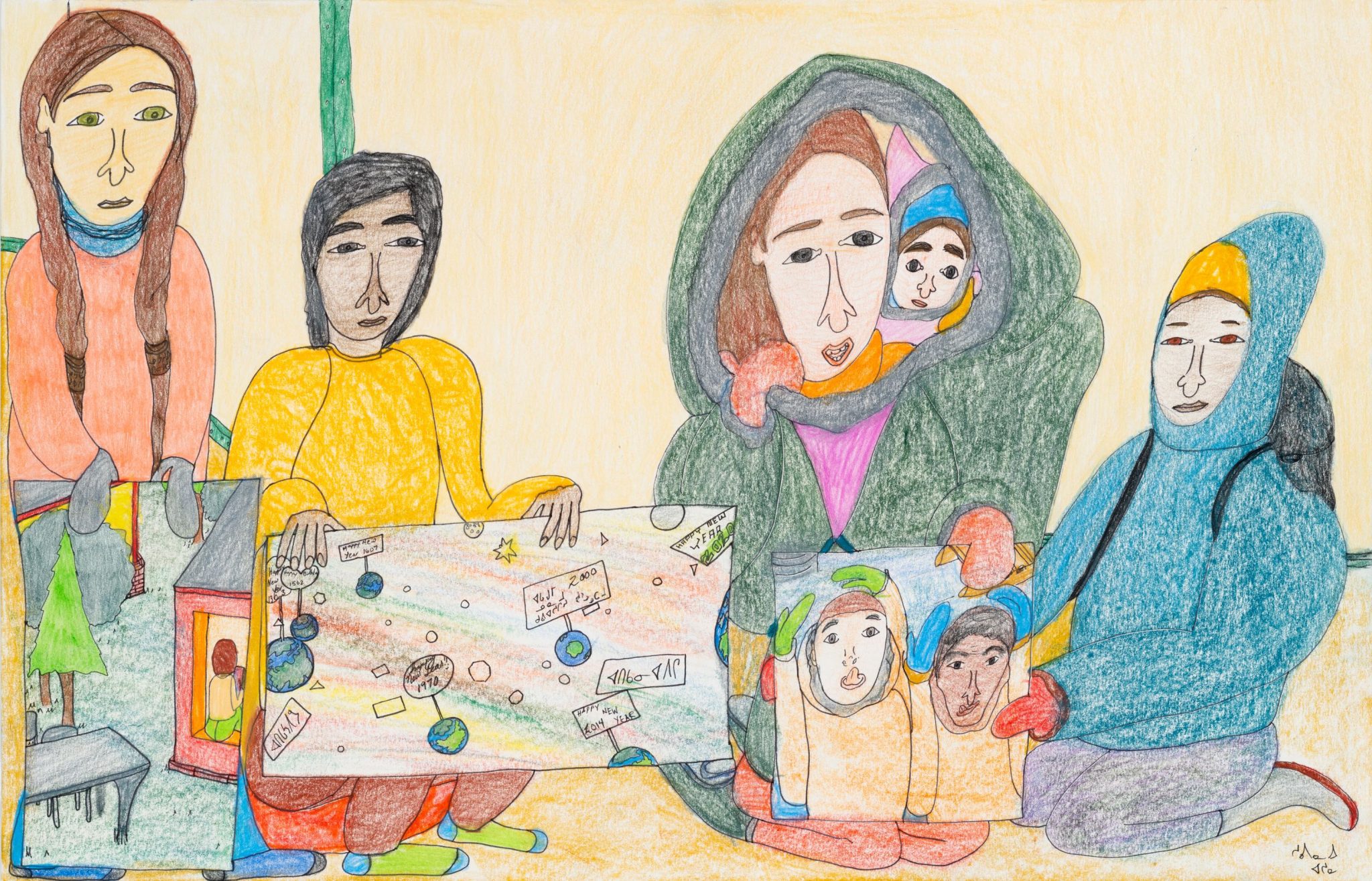Shuvinai Ashoona’s drawings of Inuit life
In Shuvinai Ashoona’s drawings of Kinngait, a hamlet in Nunavut Province, northern Canada, people live alongside characters from Inuit mythology and beasts of the artist’s creation – and none of them seem fazed. Through this strange but comfortable coalescence of an ancient past, precarious present and imagined future, the Inuk artist’s drawings present an idiosyncratic view of her Arctic community and how time is experienced in it. As in many Indigenous communities, climate change feels more current than impending in Kinngait, where decreases in sea ice and rising temperatures are rapidly transforming the way Inuit communities live. Although Ashoona’s current exhibition When I Draw at The Perimeter in London is not explicitly about the climate crisis, her approach to understanding time proves insightful when considering a crisis in which time plays a crucial role.
The exhibition – her first in Europe since the 2022 Venice Biennale – begins with a photograph, a carving, a print and a drawing. The black-and-white photograph shows Kinngait, with its modest mountains, the coast and a collection of single-story buildings – grocery stores, homes and artist studios. The studio complex, originally known as West Baffin Eskimo Cooperative and now as Kinngait Studios, was established in 1959 as a place for the community members to make work, primarily prints, to sell and bring money into the community. The creation of these studios gave rise to scores of artists, making Kinngait home to the largest community of artists per capita in Canada. Working across printmaking, sculpture and drawing, each artist provides their unique perspective on their Northern home. In the centre of the room is The Green Bear (1961), a soapstone work designed by Lucy Qinnuayuak and carved by Ashoona’s uncle Eegyvudluk Pootoogook, that was used as a plate to make the corresponding print attributed to Qinnuayuak, Large Bear (1961), which hangs on the adjacent wall. Ashoona’s drawing of Kinngait, positined in line with the print and carving, demonstrates the richness and evolution of artmaking in this community.
The upper two floors showcase Ashoona’s coloured pencil drawings of private and public spaces in Kinngait. In Untitled (2021), a procession of mythical creatures, people and beasts weave between Kinngait’s colourful houses. One of the beasts is a green seal-human hybrid, alluding to Sedna, the Inuit goddess of sea and marine animals. Another, a three-headed yellow creature drawn from Ashoona’s imagination, interlocks hands with a person near the edge of the frame. In Untitled (2020), a group of young men sit indoors, wearing T-shirts printed with text in English and syllabics, the writing system used by Inuktitut speakers in some parts of Arctic Canada. One of the shirts has an image of people in traditional Inuit clothing out on the Arctic tundra. Here, as in her other works, the self-taught artist’s use of coloured pencil creates a range of textures that enliven her two-dimensional figures and their surroundings. In this piece, Ashoona showcases the traditional nomadic way of life her people followed for millennia before the colonial government stopped this practice and forced them to live in settlements like Kinngait. In the worlds combined here, Ashoona shows Inuit resilience in the face of colonisation.

This resilience also extends to grappling with the impacts of the climate crisis. Although her work does not offer any moralising narratives on the matter, it is clear Ashoona thinks a lot about the Earth. Globes are a recurring motif, for example. Her drawing Untitled (2010), in The Perimeter’s basement floor where archival materials on Inuit art are displayed, depicts several globes surrounded by cloudlike swirls of animals – moose, beavers, turtles. This work shifts a view of the world away from the anthropocentric to spotlight the multitude of non-human life with which our world is shared, and so too their role in maintaining it. However, the homogeneity of these imagined worlds also speaks to the absurdity of humans’ perception of their own centrality on Earth. Ashoona’s homogenous worlds can be imagined, but only a heterogeneous one is possible.
Discourse on the climate crisis hinges not only on a multispecies perspective but also on time: from the ongoing impacts of the Anthropocene to the litany of deadlines governments and corporations have set for themselves to achieve carbon neutrality and which are now fast approaching. The most recent COP28, hosted in Dubai amid a backdrop of rising temperatures, worsening droughts, floods and other forms of environmental damage, felt like an exercise in re-entrenching the status quo. Again, representatives from the most impacted states made pleas for urgent action and a more equitable approach to reaching global goals; rich industrialised nations from the Global North congratulated themselves for agreeing on minimal concessions. Seeing this play out year after year feels like watching the creation of one of the impossible worlds in Ashoona’s drawing – in this one perhaps only people from certain countries exist. The concept of time wasted feels especially grave in this instance, and that gravity can beget a hopelessness that begets inaction. Despite the slow steps forward many countries and companies are making on this matter, time is still on our side if we continue to act to make it so. By Ashoona’s logic, a future world in which the climate crisis is under control, if not resolved, is as real as the iterations of the past that have led us to this moment. All of these worlds are always already here and we can learn from them if we choose to value them equally. For an artist whose culture is based in a part of the world that is particularly susceptible to climate change, something she has no doubt witnessed in her lifetime, this view is strikingly hopeful.

In the face of this crisis, perhaps our relationship to time is not the only thing that can be revised: our relationship to who and what we share our environment with can be too. Tanya Tagaq, an Inuk writer, singer and visual artist from Cambridge Bay, Nunavut, demonstrates kinship with the natural world in her debut Split Tooth (2023). The novel follows a teenage girl who grows up in Nunavut in the 1970s. Throughout the book, Tagaq dissolves assumed borders between animals, humans and the elements. She achieves this both in how her character relates to them and in her descriptions, which go beyond anthropomorphism and personification – humans are decentred as the point of reference. In a poetic sequence the nameless main character is saved from drowning in the Arctic waters by the northern lights. In another part of the book, she writes about the timeless interconnectedness between humans and their environment: ‘Land protects and owns me. Land feeds me. My father and mother are the Land. My future children are the Land. You are the Land.’ Ashoona and Tagaq alike present worlds that are connected and plentiful, not only with life but with wisdom to approach its challenges.
Salena Barry is a writer originally from Toronto Canada, currently living in London
